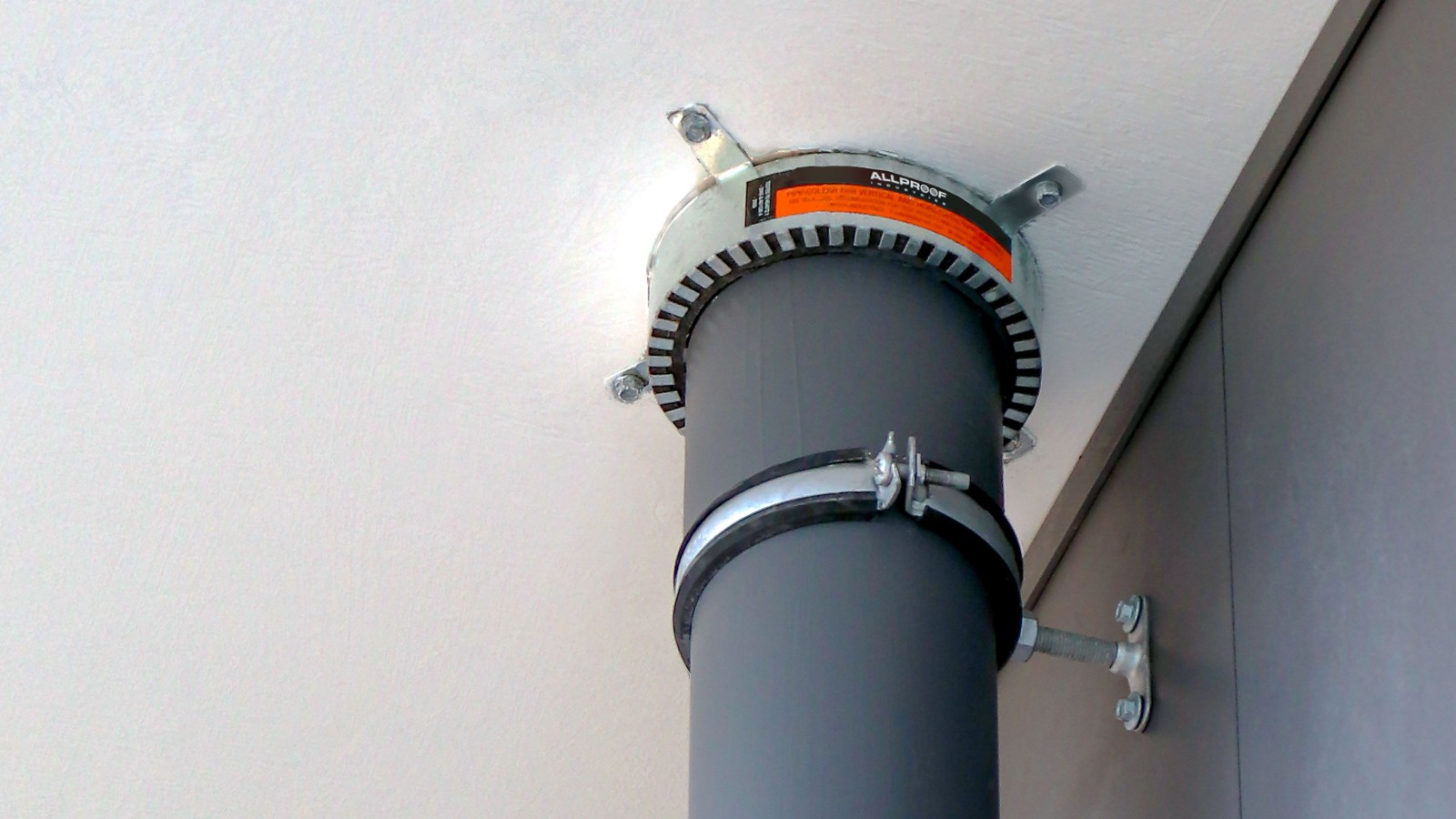In the previous Detailed article, we looked at ways to create drainage systems in balconies, these drainage systems create penetrations through the balcony where a drain and overflow are located. Fire rating these penetrations through the balcony limits the spread of fire between properties under different titles and the façade of the building.
The selection of fire stopping devices for these penetrations will be dependant of the FRR of the building, floor construction and the penetrating service. We shall outline a few details to advise on solutions for creating a well-designed, safe, and aesthetically pleasing space for the building inhabitants to enjoy.
A key element to keep in mind when designing balcony spaces, or any space, is to ensure any fire stopping devices are not inhibited from activating in the event of a fire. PFP systems are designed to respond quickly to heat from a fire to close a penetration, obstructing the device could cause a delay in its ability to activate. Allproof recommend allowing a minimum of 50mm clearance area around the device for optimum performance.
Soffit cavities can limit the available space for passive fire systems, if the floor to the balcony has been created in-situ as an extension to the floor slab of the unit, a pre-pour fire collar would offer an excellent solution. Cast in fire collars sit within the flooring structure itself, and mean no additional space is required to allow for a fire collar. Alternatively, if a retro fit collar is required, a drop in fire collar will also sit within the flooring structure. Allproof’s standard retro fit fire collars also have a uniquely low profile, so if a traditional collar is required, it will not demand excess space in the soffit.
Passive fire systems are tested on pipe materials that are combustible in a fire leaving an open penetration, therefore needing to be fire rated. Stainless steel or other metal down pipes penetrating through balconies do not react in the same manner. Best practice to ensure fire rating, is to specify a transition of the downpipe material into uPVC as it passes through the floor. The transition can be hidden below tiles and within the soffit cavity. uPVC pipe should extend for a minimum of 50mm beyond the fire stopping device on the fire side to ensure correct activation. Allproof’s stainless steel downpipes can be manufactured with sockets to suit PVC connections.
To ensure the collar will provide the correct FRL please refer to Allproof’s passive fire manuals for test results on the various systems, substrates (including substrate thickness) and penetrating service. Allproof manufacture roof and balcony drainage systems along with internal wastes, positioning ourselves to provide excellent insights and advice on their compatibility and integration with passive fire systems throughout entire projects.




























 Most Popular
Most Popular Popular Products
Popular Products


